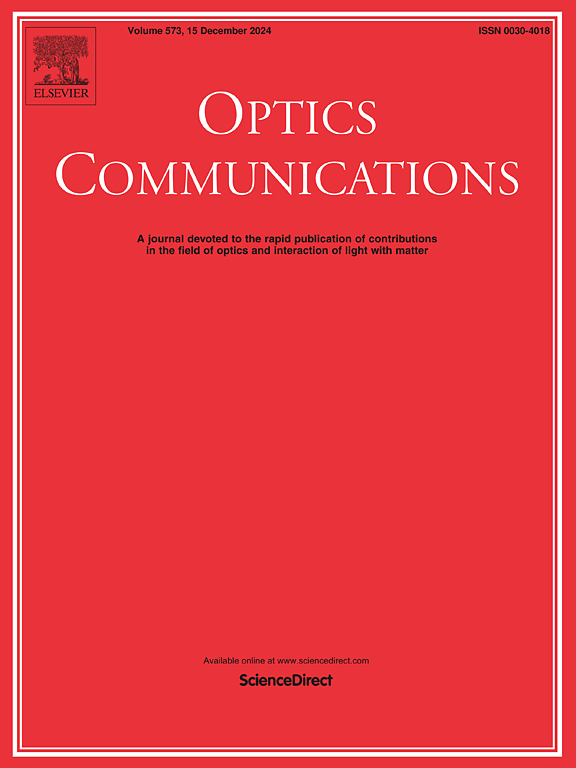利用光子晶体板中的合并 BIC 增强超高 Q 太赫兹共振的入射角稳健性
IF 2.5
3区 物理与天体物理
Q2 OPTICS
引用次数: 0
摘要
超高质量(Q)太赫兹(THz)共振在非线性光学、传感和其他领域的应用具有巨大潜力。然而,它们的性能往往受到广角入射造成的色散效应和制造缺陷造成的散射损耗的影响。在此,我们提出了一种基于光子晶体(PhC)板的新型太赫兹谐振器,它具有 C2v 对称性和平坦的 TE 模带。理论结果表明,连续体中的对称保护束缚态(S-P BIC)可发生在 Γ 点,而在ΓX 和 ΓY 方向上会出现四个意外的 BIC。利用 BIC 的拓扑特性,通过合理调整谐振器的结构参数,S-P BIC 和意外 BIC 在 Γ 点处合并,在 ΓX 和 ΓY 方向形成 Q 值高达 1011 的平坦带。因此,基于平坦的 TE 模式带和高 Q 值平坦带,当 X 或 Y 偏振太赫兹波入射到该 PhIC 上时,其 Q 值高达 109。此外,当太赫兹波的入射角从 0°增加到 20°时,谐振传输峰的相对位移和带宽变化均接近 0%,这表明该谐振器具有极强的鲁棒性。本文章由计算机程序翻译,如有差异,请以英文原文为准。
Using merging BICs in photonic crystal slabs to enhance incident angle robustness of Ultrahigh-Q terahertz resonance
Ultrahigh-quality (Q) terahertz (THz) resonances hold tremendous potential for applications in nonlinear optics, sensing, and other fields. However, their performance is often affected by the dispersion effects caused by wide-angle incidence and the scattering losses caused by manufacturing defects. Here, we propose a novel THz resonator based on photonic crystal (PhC) slab with C2v symmetry and flat TE mode bands. Theoretical results indicate, symmetry-protected bound states in continuum (S–P BIC) can occur at the Γ point and four accidental BICs in the ΓX and ΓY directions. Leveraging the topological properties of BICs, by judiciously tuning the structural parameter of resonator, the S–P BIC and accidental BICs are merged at the Γ point, forming flat bands with Q values as high as 1011 in the ΓX and ΓY directions. Consequently, based on the flat TE mode bands and high-Q flat bands, when X or Y-polarized THz waves are incident on this PhC, it exhibits a Q value as high as 109. Furthermore, as the incidence angle of the THz waves increases from 0° to 20°, the relative shift and bandwidth variation of resonant transmission peak are close to 0%, which demonstrates that the resonator has extremely strong robustness.
求助全文
通过发布文献求助,成功后即可免费获取论文全文。
去求助
来源期刊

Optics Communications
物理-光学
CiteScore
5.10
自引率
8.30%
发文量
681
审稿时长
38 days
期刊介绍:
Optics Communications invites original and timely contributions containing new results in various fields of optics and photonics. The journal considers theoretical and experimental research in areas ranging from the fundamental properties of light to technological applications. Topics covered include classical and quantum optics, optical physics and light-matter interactions, lasers, imaging, guided-wave optics and optical information processing. Manuscripts should offer clear evidence of novelty and significance. Papers concentrating on mathematical and computational issues, with limited connection to optics, are not suitable for publication in the Journal. Similarly, small technical advances, or papers concerned only with engineering applications or issues of materials science fall outside the journal scope.
 求助内容:
求助内容: 应助结果提醒方式:
应助结果提醒方式:


